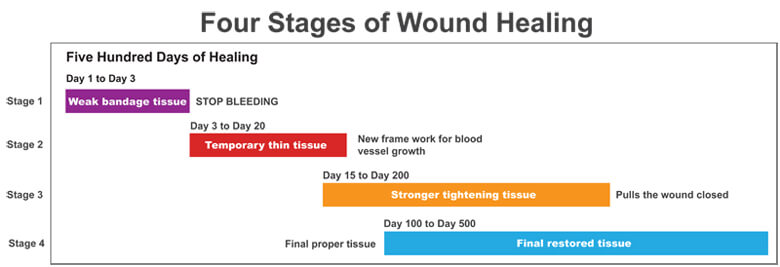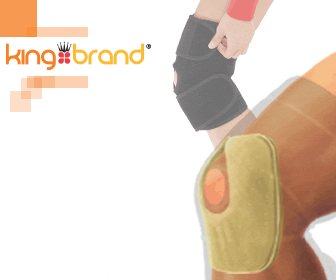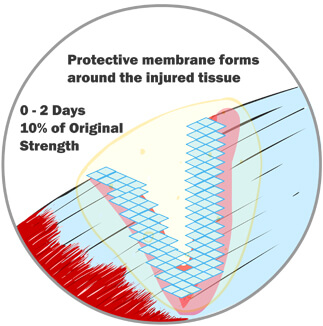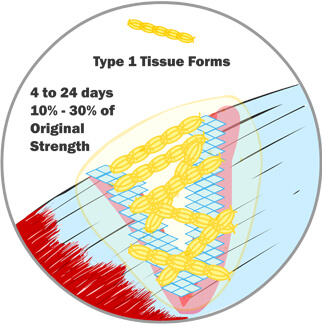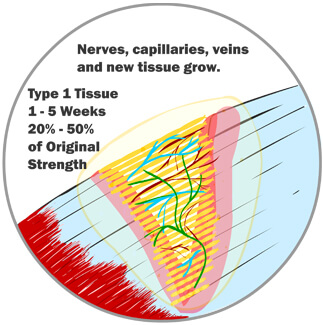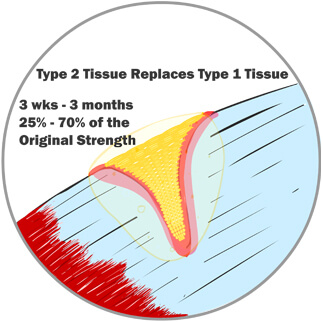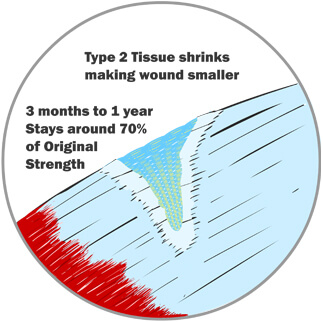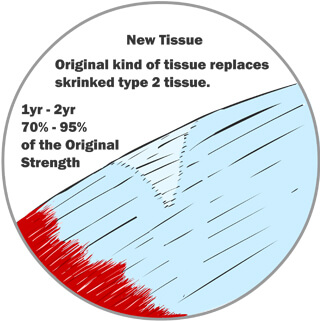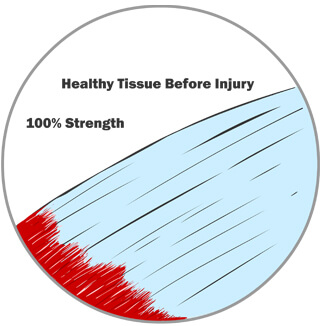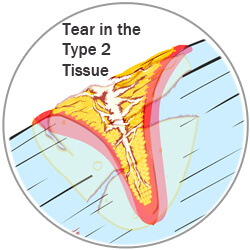MCL Tear Recovery Times
- Stage 1 -- Stop the Bleeding
- Stage 2 -- Fill the Gap
- Stage 3 -- Shrink the Gap
- Stage 4 -- Original Tissue Type Returns
- The Healing and Re-Injury Cycle
No matter what injury you're dealing with, the vast majority of your recovery is dependent on your body healing itself. No matter how you describe your injury, whether it's a tear or strain or inflammation, your soft tissue is going to be repaired by your own body.
The healing process is quite complex. And, it goes on to continue healing long after the pain has disappeared. It is very common for the full healing process to continue for up to 2 years - even for minor injuries.
There are three levels of severity for classifying MCL injuries. These are:
- Grade 1 - This is considered an MCL sprain. The MCL has been overstretched but not torn. This is the least severe MCL injury grade.
- Grade 2 - The MCL has been partially torn, but not completely torn in a Grade 2 MCL injury. You may notice the knee is slightly unstable when walking on it.
- Grade 3 - This is a complete rupture of the MCL, meaning the tissue is in two separate pieces. This is the most severe MCL injury grade. It is likely that your knee won't be able to support your weight.
